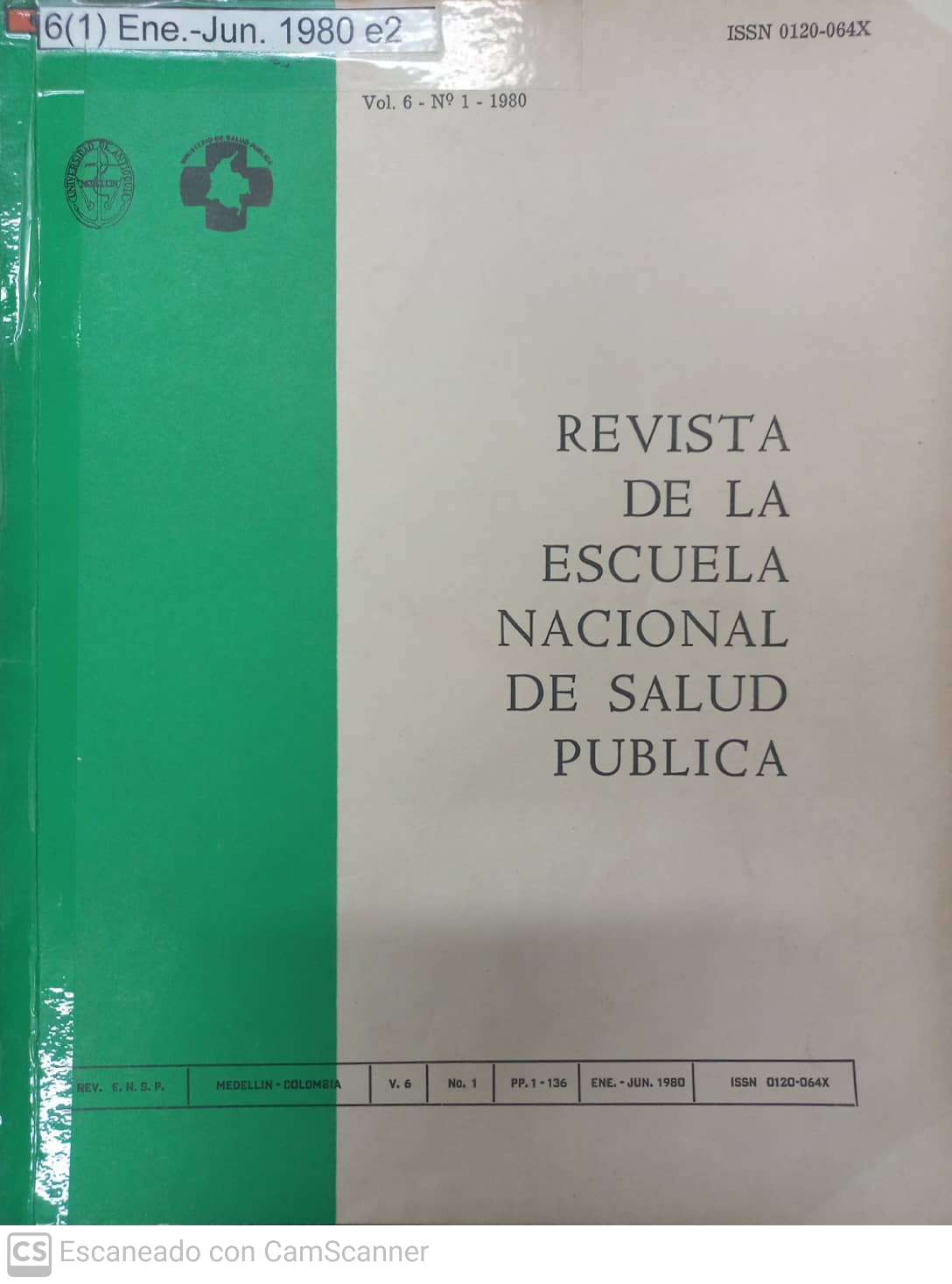ASPECTOS EPIDEMIOLOGICOS PARA LA PLANEACION DE LA ATENCION EN CASOS DE DESASTRE
Abstract
Disaster has been defined as an ecological disturbance that exceeds the adjustment capacity of the affected community (1).
The W.H.O. defines it as “a situation involving serious and immediate unforeseen threats to public health.
The Committee on the Challenges of Modern Society (C.C.M.S.) has defined disaster as an act of nature or man whose threat is of sufficient severity and magnitude to warrant emergency assistance. (2).
In any case, whatever the definition of a disaster may be, the fact is that it is a sudden or foreseen situation that exceeds expectations and that, due to its magnitude, requires the mobilization of the personnel of the affected area, of the country to which the area belongs and eventually of other countries, in order to attend to the people and the environment in such a way that the consequences may be the least possible, and to avoid new disasters.
Downloads
References
GOYET, C. de Ville et al. El terremoto de Guatemala: evaluación epidemiológica de las operaciones de socorro. Boletín de la Oficina Sanitaria Panamericana 81(3): 199-215, Sep. 1976.
LECHAT, Michel F. La epidemiología de los desastres. Trad. de Proceeding of the Royal Society of Medicine 69(6): 421-426, Jun-1976.
VELIMIROVIC, Boris. Evaluación del riesgo epidemiológico y estimación de riesgos en casos de desastres. Boletín de la Oficina Sanitaria Panamericana 83(2): 119-129, 1977.
OFICINA SANITARIA PANAMERICANA. Enfermedades transmisibles en situaciones de desastre. Preparación para casos de desastres en las Américas. 2:1-5, Jun. 1979.
FAJARDO ORTIZ, Guillermo. El Hospital en los desastres. Prensa Médica Mexicana 38(5-6): 175-177, May-Jun. 1973.
KROEGER, E.K. Disaster management in tropical countries. Tropical Doctor 6: 147-151, 1976.
PRIETO LORENZO, Antonio et al. Actuación sanitaria en desastres naturales. Un esquema de normas prácticas. Revista de Sanidad e Higiene Pública 50: 533-549, May-Jun. 1976.
ZAPATA DIAZ, Raúl. La ayuda internacional en casos de desastres naturales. Cuademos Médico-Sociales 15(3): 20-22, Sept. 1974.
SMITH, Anthony Oliver. Disaster rehabilitation and social change in yungay, Perú. Human Organization, 36(1): 5-13, 1977.
MOLES, T.M. Planning for major disasters. British Joumal of Anaesthesia 49: 643-649, 1977.
NEW HANOVER MEMORIAL HOSPITAL. Emergency plans. 1973.
ZAPATA DIAZ, Raúl. La atención médica chilena en caso de catástrofe. Cuademos Médico-Sociales 15(1): 23-32, 1975.
COULT RIP, Raymond L. Medical aspects of US disaster relief operations in Nicaragua Military Medecine, p. 879-883, Nov. 1974.
LEGER, P.R. Environmental health guide for natural disaster. People to People Health Foundation Project Hope, 1973.
GETTING DISASTERS under control. Dimensions in. Health Service 54(8): 53-54, Aug. 1977.
GANDUÑO LOPEZ, Héctor. El plan nacional de auxilio en caso de desastre y su aplicación en la zona fronteriza México-Estados Unidos. Boletín de la Oficina Sanitaria Panamericana 67(3): 187-194, Sep. 1969.
Downloads
Published
How to Cite
Issue
Section
License
Copyright (c) 2025 John A. Flórez Trujillo

This work is licensed under a Creative Commons Attribution-NonCommercial-ShareAlike 4.0 International License.
The contents of the articles are the responsibility of the authors
The editorial committee has editorial independence from the National School of Public Health "Héctor Abad Gómez" of the University of Antioquia.
The editorial committee is not responsible for aspects related to copying, plagiarism or fraud that may appear in the articles published in it.
When you are going to reproduce and disclose photographs or personal data in printed or digital format, informed consent is required. Therefore, this requirement is required of the author at the time of receipt of the manuscript.
Authors are responsible for obtaining the necessary permissions to reproduce any material protected by reproduction rights.
The authors preserve the moral rights and assign the economic rights that will correspond to the University of Antioquia, to publish it, distribute electronic copies, include them in indexing services, directories or national and international databases in Open Access, under the Creative Commons Attribution license -Not Commercial-Share Equal 4.0 International Commercial (CC BY-NC-SA) which allows others to distribute, remix, retouch, and create from the work in a non-commercial way, as long as the respective credit and license are granted. new creations under the same conditions.
The authors will sign the declaration of transfer of economic rights to the University of Antioquia, after the acceptance of the manuscript.
The editorial committee reserves the right to reject the articles whose authors do not offer satisfactory explanations about the contribution of each author, to meet the criteria of authorship in the submission letter. All authors must meet the four criteria of authorship according to ICMJE: "a) .- That there is a substantial contribution to the conception or design of the article or to the acquisition, analysis or interpretation of the data. b) That they have participated in the design of the research work or in the critical review of its intellectual content. c) .- That has been intervened in the approval of the final version that will be published.d). That they have the capacity to respond to all aspects of the article in order to ensure that issues related to the accuracy or integrity of any part of the work are adequately investigated and resolved. "








 --
--  --
--
